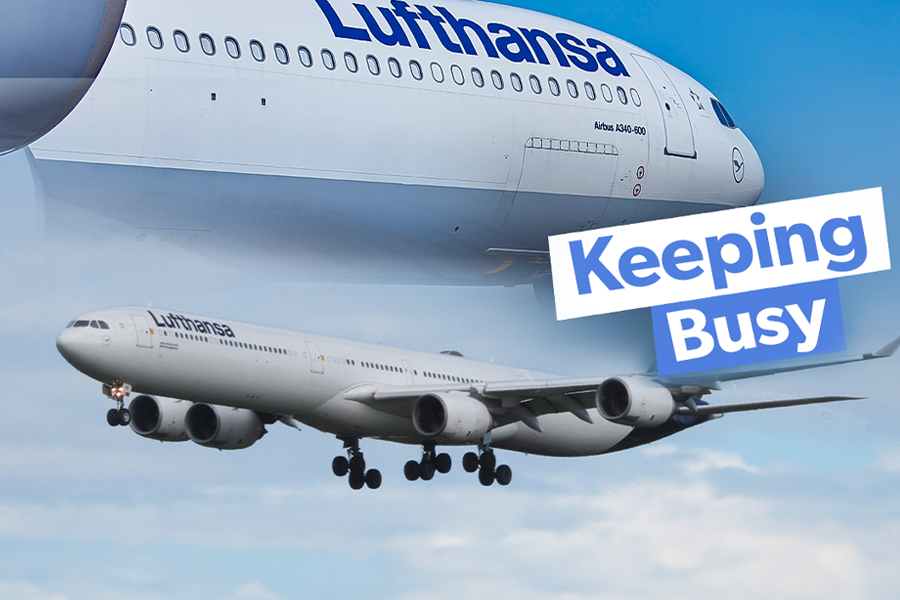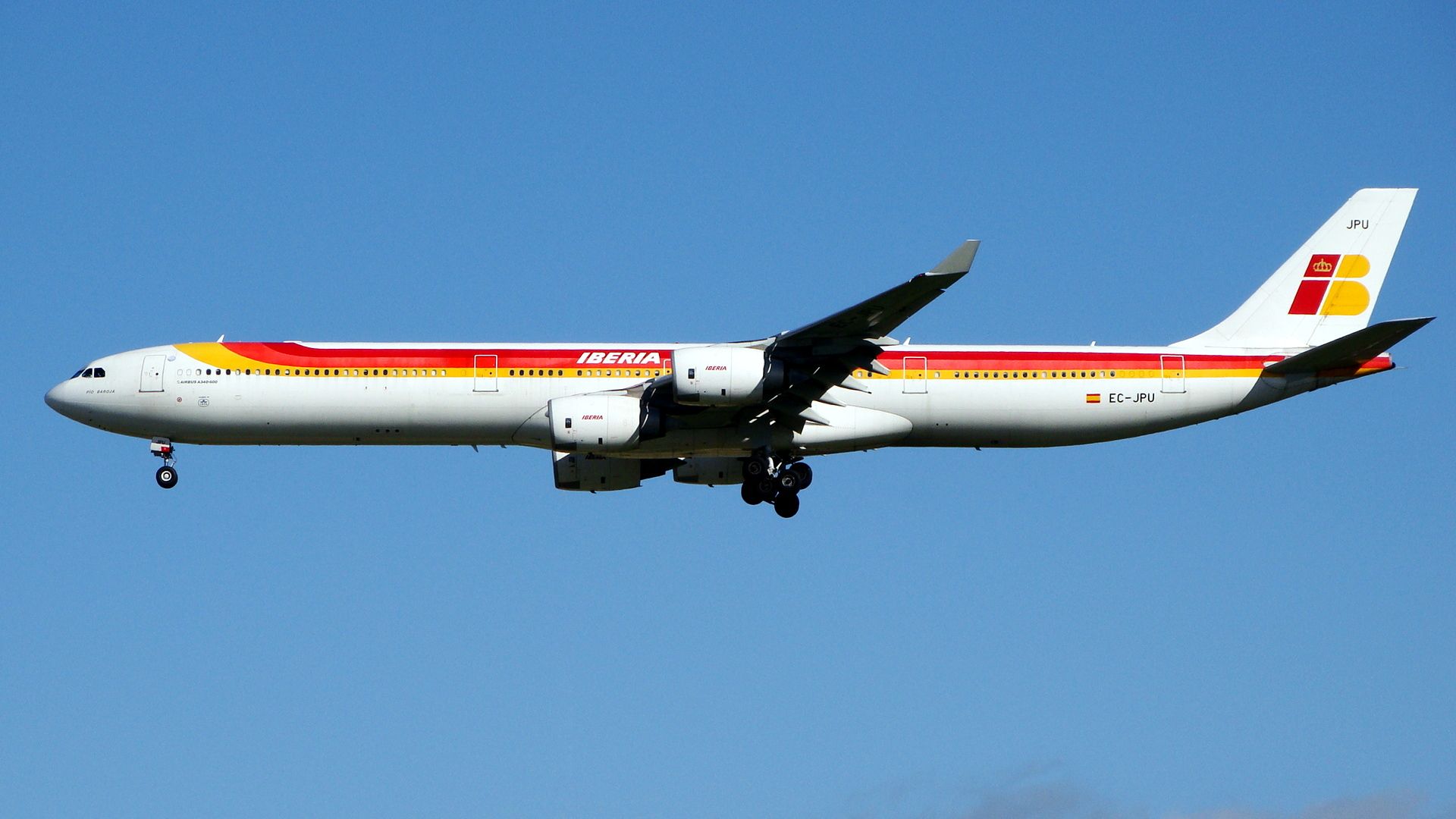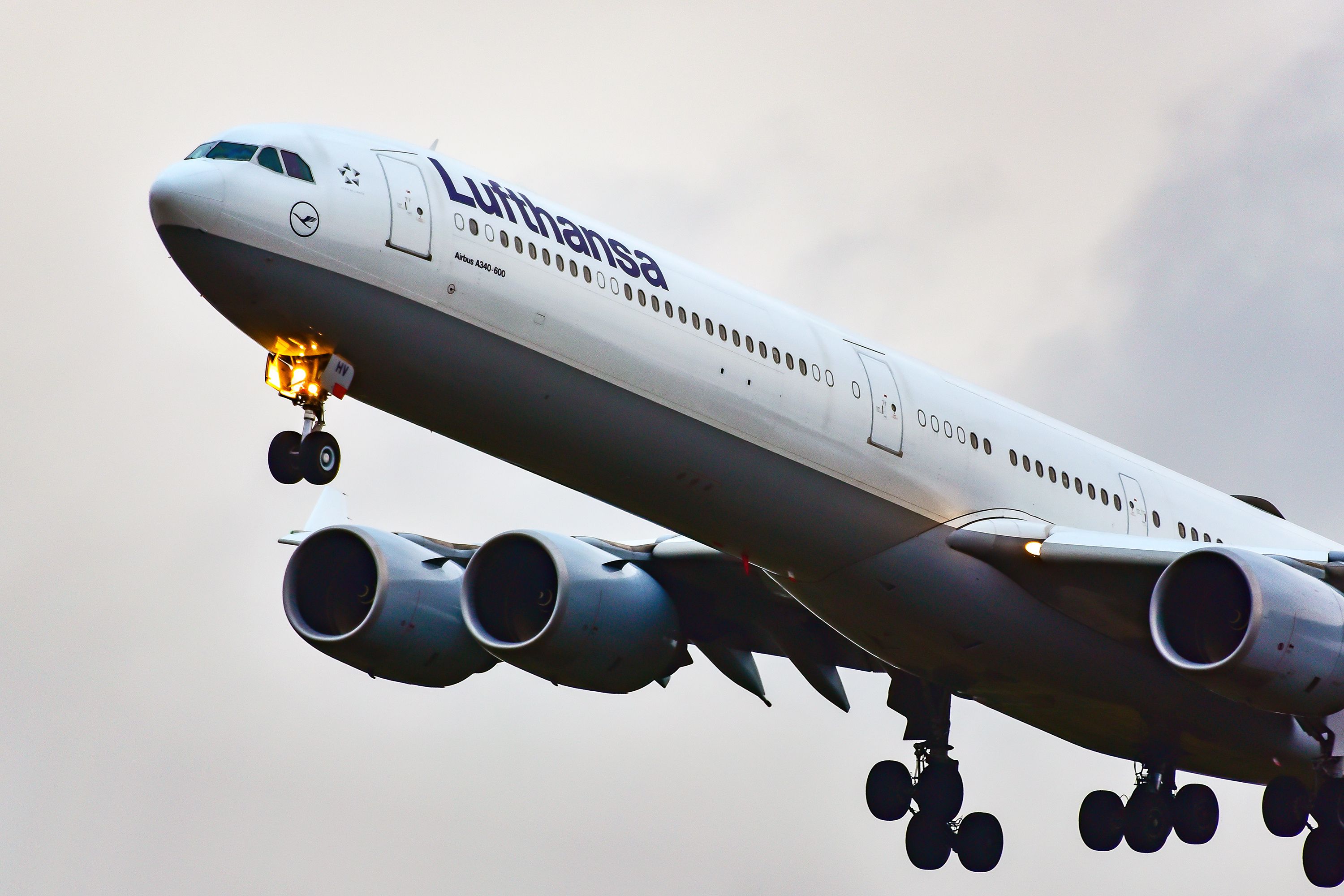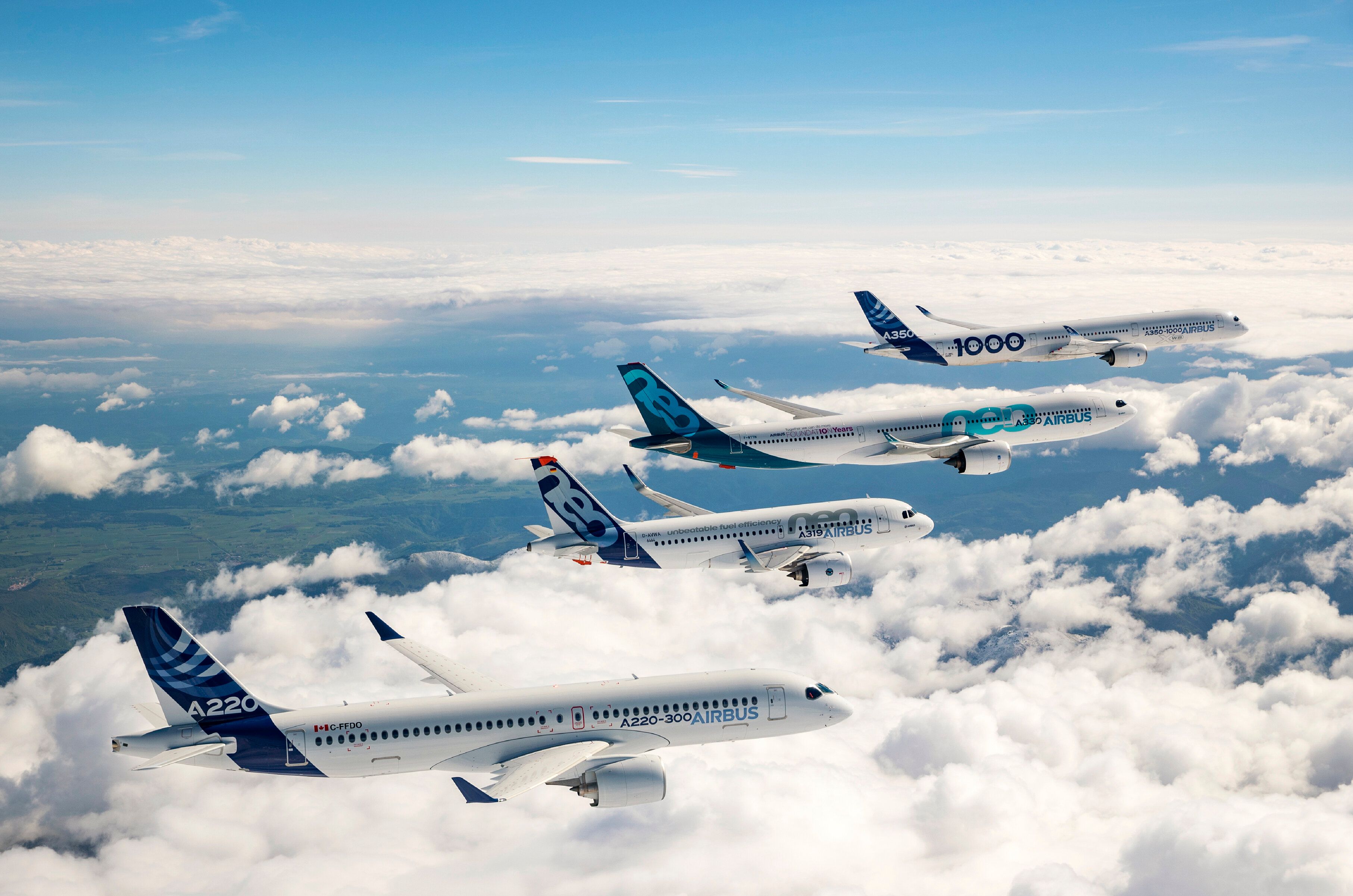Summary
- The Airbus A340-600 was developed alongside the A330 to meet the needs of both twin and quadjet customers, resulting in cost savings.
- The A340-600 was the longest airliner until the Boeing 747-8. The fuselage stretch increased the typical capacity to 370.
- Larger A340 variants, especially the A340-600, were more popular. Airbus delivered 97 A340-600 aircraft compared to just 32 A340-500s.
The Airbus A340 is one of the oldest widebody airlines still in service. Several variants of the A340 quad-jet fly with popular airlines, mainly with the European legacy carriers. The longest variant of the family, the A340-600, was the second-most delivered of the A340 variants and the longest airliner until the Boeing 747-8 was launched. While the type is on the decline due to its four engines, we look at the notable design characteristics of what is known as a flying pencil, most notably its length.
Developing the A340
Airbus A340-600
- Fuselage length: 247 ft 3 in (75.36 m)
- Height: 58 ft 11 in (17.93 m)
- Wingspan: 208 ft 2 in (63.45 m)
Photo: Vytautas Kielaitis | Shutterstock
We will first examine the origins of the A340-600. Airbus launched the joint A330 and A340 program in 1987, following considerations about whether to develop a twin-engine or a four-engine widebody. Different airlines wanted different things. There was interest in the efficiency of a twin, but ETOPS rules at the time meant many airlines still wanted a quadjet for transoceanic flights.
Developing two aircraft together would meet the needs of both sets of customers, and the joint design would result in cost savings. They shared the same basic fuselage and wing design, many structural components and systems, and a common flight deck.

Related
Why Lufthansa’s A340-600 Has Toilets In The Cargo Hold
The location of the lavatories is a space-efficient solution to the aircraft’s considerable cargo capacity.
The A340 took its first flight in October 1991, with the first aircraft delivered to launch customer Lufthansa in February 1993. Airbus offered two variants at launch. The A340-200 was the shortest variant of the series, offering a typical two-class capacity of 303. The A340-300 stretched the fuselage and increased capacity to 335.
Larger variants
|
A340-200 |
A340-300 |
A340-500 |
A340-600 |
|
|---|---|---|---|---|
|
Length |
59.4 m (195 ft 0 in) |
63.69 m (208 ft 11 in) |
67.93 m (220 ft 10 in) |
75.36 m (247 ft 3 in) |
|
Height |
17.03 m (55.86 ft) |
16.99 m (55.72 ft) |
17.53 m (57.51 ft) |
17.93 m (58.84 ft) |
|
Wingspan |
60.3 m (197.83 ft) |
60.3 m (197.83 ft) |
63.45 m (208.17 ft) |
63.45 m (208.17 ft) |
Two more variants were later introduced. The A340-500 and -600 were developed in the late 1990s (and first flew in 2001) as higher capacity and increased range upgrades. The A340-500 offered a slight stretch over the -300 but a vast improvement in range. It offered the highest range of any aircraft until beaten by the A350-900ULR.
The A340-600 instead focused on capacity. It stretched the fuselage a full 12 meters over the A340-500, taking typical capacity up to 370. It could accommodate 475 in high-density single-class seating, but no operator has pushed it that far.

Related
Top 5: These Are The Airbus A340-600’s Busiest Routes At Lufthansa
While the airline has been phasing the Airbus A340-600 slowly, there still are some busy routes that involve the type.
Is it the longest aircraft?
With its stretched fuselage, the A340-600 reaches a lengthy 75.36 meters, according to Airbus data. The A340-600 was the longest aircraft in service (beating both the A380 and the Boeing 747-400) until the Boeing 747-8 launch.
The 747-8, with a length of 76.3 meters, took over when it was launched. The new twinjet Boeing 777X will beat both of them when it enters service, which, after several announcements of postponements, is currently set to happen in 2025. The 777-9 will be the longest commercial aircraft ever built, with a length of 76.72 meters.
|
Aircraft |
Length |
|---|---|
|
Airbus A340-600 |
247 ft 3 in (75.36 m) |
|
Airbus A380-800 |
238 ft 7 in (72.72 m) |
|
Airbus A350-1000 |
242 ft 2 in (73.79 m) |
|
Boeing 747-400 |
231 ft 10 in (70.66 m) |
|
Boeing 747-8 |
250 ft 2 in (76.25 m) |
|
Boeing 777X |
251 ft 9 in (76.73 m) |
Longer has been more popular
Last year, there was some activity on the A340-600s when Cuba’s leader Miguel Díaz-Canel took an international tour with a Conviasa unit. He visited Algeria, Russia, Turkey, and China onboard the aircraft. Also, Lufthansa shared that it was reactivating five more -600s. The flag carrier of Germany noted that the demand for first class cabins had been higher than anticipated amid the reintroduction.
There has been plenty of discussion about the A340 and whether it was a success or a failure for Airbus. It may not have had the large sales numbers to make it look successful immediately, but it served an important role for many airlines at the time (even if it is less popular now). Furthermore, developing it alongside the A330 also helped to justify its limited sales.
One thing is clear from the sales data: the two longer variants were more popular. Of the initial two variants, Airbus delivered just 28 A340-200 aircraft, as opposed to 218 A340-300 aircraft. The same was true for the subsequent variants: Airbus delivered 97 A340-600 aircraft, as opposed to just 32 A340-500s.
What are your thoughts about the Airbus A340? What do you make of the overall history of the type? In the comment section, let us know your thoughts on the plane and its operations.



